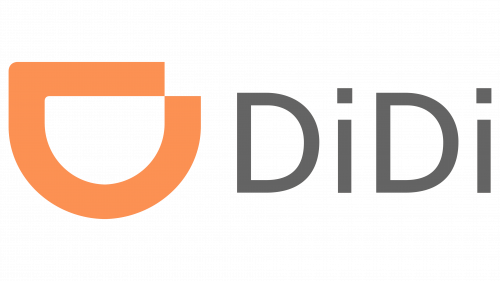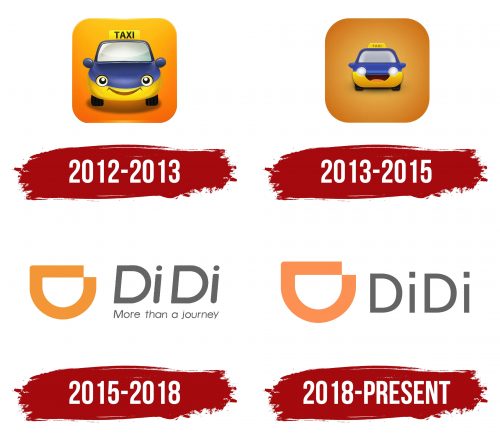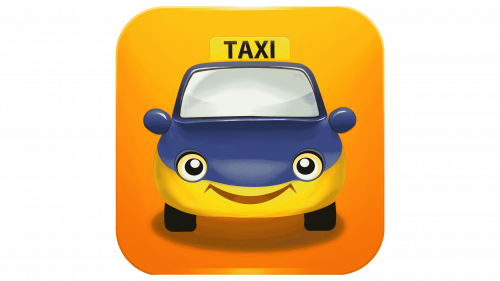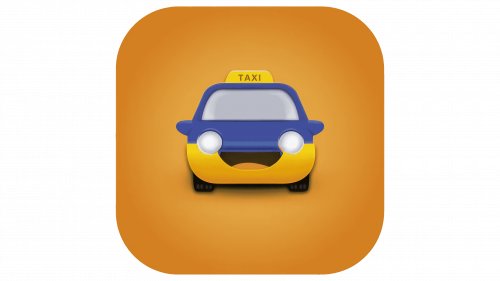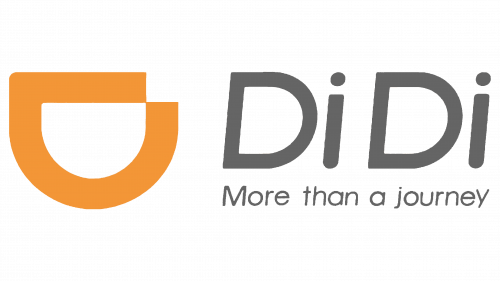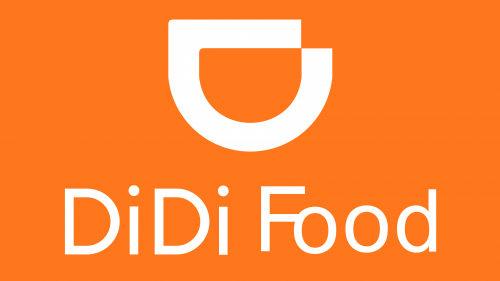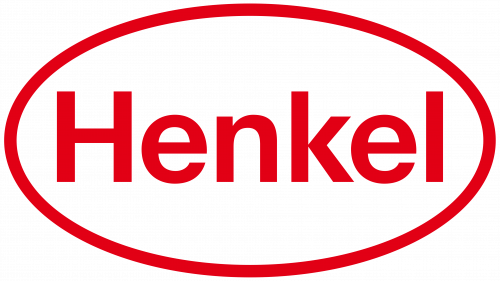The DiDi logo emphasizes the company’s global reach and professionalism. It implements cutting-edge technology in the transportation services industry. The emblem also conveys the brand’s accessibility, aimed at attracting those seeking reliable taxi services or renting a car.
DiDi: Brand overview
DiDi’s history started in Beijing, China, in 2012. Former Alibaba Group manager Cheng Wei saw the possibility of creating mobile applications for taxi-hailing and launched the business. The company was formerly known as Didi Dache, which means “Beep Beep Call a Taxi” in Chinese.
In its initial months, the firm started creating a mobile app for taxi-hailing. The development team’s tasks included developing a dependable geolocation system and an intuitive user interface to link passengers with the closest drivers as soon as possible.
Beijing saw the launch of the app around the end of 2012. The company aggressively sought out new drivers by providing taxi drivers with a new method of locating consumers via the mobile app. This was an inventive solution for the Chinese taxi industry, which mostly relied on conventional ways of hailing taxis at the time.
In 2013, the business experienced a period of major expansion. The company began extending beyond Beijing by launching its services in other key Chinese cities. That same year, it received a substantial investment from Tencent Holdings, one of China’s largest technology giants.
In 2014, there was intense competition in China’s ride-hailing sector. The firm’s primary rival was Kuaidi Dache, which had Alibaba Group’s backing. In an intense pricing battle to draw customers, both businesses started giving drivers large subsidies and passenger discounts.
A turning point in the company’s history occurred in February 2015, when it announced a merger with its primary rival, Kuaidi Dache. This merger led to the creation of Didi Kuaidi, later known as Didi Chuxing. The union strengthened the company’s market position and reduced the costs of competing against rivals.
After the merger, the enterprise started aggressively extending its service offering. In 2015, it introduced the ride-sharing program Hitch, which enabled regular drivers to provide rides to passengers traveling in the same direction.
A noteworthy development occurred in 2016 when the business acquired Uber’s Chinese division. This acquisition cemented its position as the leading company in China’s ride-hailing sector and effectively eliminated the last major competitor.
The company started expanding internationally in 2017. It invested in several regional ride-hailing businesses, including 99 in Brazil and Grab in Southeast Asia. This tactic allowed the firm to increase its worldwide footprint without starting from scratch in new regions.
In 2018, the company expanded its services. It began testing bike and electric scooter rentals and launched Didi Food, its food delivery service. These initiatives aimed to develop a comprehensive mobility platform encompassing various urban transportation options.
2019, the firm continued its global expansion by launching services in Australia, Japan, and several Latin American countries. It also established research facilities in China and the US and began majorly investing in autonomous driving technologies.
For the company, 2020 was a year of technological progress. The business unveiled its first electric vehicle model, which it had co-developed with BYD, one of the biggest producers of electric vehicles in China. This action demonstrated its dedication to vertical integration and total control over the transportation ecosystem.
2021 the company introduced services in South Africa and Russia as part of its ongoing global expansion. Additionally, the business improved its standing in autonomous driving by successfully testing self-driving taxis in Shanghai.
In 2022, the company faced major regulatory obstacles in China. In 2021, a cybersecurity review ordered the firm to remove its apps from Chinese app stores. As a result, the ride-hailing giant started the process of delisting from the New York Stock Exchange, the venue of its 2021 IPO. This action was taken to maintain the company’s position in its native market and adhere to Chinese regulatory regulations.
That year, the enterprise expanded its operations beyond China by strengthening its position in global markets, particularly in Australia and Latin America. The company made substantial investments in these regions, launching new products and advertising campaigns to broaden its offerings.
In 2023, Chinese authorities granted the ride-hailing service permission to start accepting new users in China, marking a crucial step toward restoring the company’s position in the domestic market. The firm gradually reintroduced its apps in Chinese app stores while launching a major campaign to regain the trust of its users.
The corporation also stepped up its efforts to electrify transportation. In addition to increasing the number of electric and hybrid cars in its fleet, the enterprise invested in infrastructure for charging stations in important Chinese cities. This tactic attempted to bolster the company’s standing as an ethical business and assist government environmental initiatives.
At the beginning of 2024, the ride-hailing giant publicly announced its aspirations to improve autonomous driving technologies. With an eye on developing cutting-edge transportation options, the business started testing autonomous taxis in several Chinese cities. This project was completed in collaboration with top automakers and tech firms.
Furthermore, the company increased the scope of its urban mobility services by introducing an integrated platform that brought together different transportation options like e-scooters, car-sharing, taxis, and bike rentals. The goal of this project was to give consumers all-inclusive municipal transit options.
Meaning and History
What is DiDi?
It is a Chinese transportation company that provides app-based mobility services. These services include ride-hailing, cabs, private cars, bike-sharing, destination driving, and other modes of urban transportation. The company operates in several countries worldwide, offering users a convenient platform to book rides via smartphone. It is one of the largest ride-hailing companies worldwide, competing with major players such as Uber and Lyft.
2012 – 2013
The DiDi company provides services through a mobile app, so its debut logo resembles an app icon featuring a shape with rounded corners. A small cartoon car with a yellow taxi sign on its roof is at the center of the orange square. This image best represents the specialization of the transportation platform, which allows users to order taxis, rent cars, and even access delivery and logistics services.
The car is depicted from the front, with large eyes and a friendly smile. The eyes are positioned where the headlights would be, the mouth where the license plate should be, and the side mirrors resemble widely spaced ears. This turns an ordinary car into a charming character, looking hopefully at anyone about to open the app.
The designers intentionally made the taxi anthropomorphic to build trust in DiDi and convey the service’s friendliness and accessibility. The modern style also reflects the company’s forward-thinking approach, visible in the unique textures that create a sense of volume and visual depth.
- The front of the car appears convex due to a successful combination of lightened and darkened areas.
- The intersecting gray stripes of different shades give the impression that the windshield is shining in the sun.
- The square base also has a gradient: the light orange at the top smoothly transitions to a dark orange at the bottom, making the emblem look dynamic.
- The semi-transparent shadow beneath the car enhances the illusion of three-dimensional space.
The use of modern computer graphics demonstrates DiDi’s commitment to technological progress. The company offers innovative solutions for transportation services and actively invests in developing autonomous vehicles.
The combination of bright colors makes the emblem even more attractive. The designers combined yellow and blue so the car would stand out well against the orange square. Black and gray create contrasting accents that enhance the dynamic feel of the orange square.
2013 – 2015
In 2013, the DiDi logo lost some of its playful, childlike atmosphere when designers reworked the appearance of the cartoon car. The car’s cheerful color (a combination of a blue top and a yellow bottom), the “TAXI” sign, the large smiling mouth, and the funny ears shaped like side mirrors remained. However, the eyes turned into gray headlights, resembling shiny spheres due to a radial gradient. The shadow beneath the car is now almost invisible, but the car gained sharp contours, giving it a sense of depth.
These changes highlighted the company’s rapid development but negatively impacted the anthropomorphic car’s character. Without the friendly eyes, it no longer appears as welcoming as it once did. Even the large smile, which takes up nearly a third of the space between the wheels and the windshield, doesn’t quite compensate for this.
The scale of the elements also changed. The car became very small, making it appear distant. This creates an illusion of depth, further enhanced by gradients, shadows, and highlights. The square base still has rounded corners, adding dynamism to the emblem. However, it no longer radiates positivity, as the designers colored it a dark, matte orange.
Overall, the logo was simplified, and paler shades were adopted, but it lost its joyful charisma. The glowing gray eyes, lacking pupils, appear somewhat eerie when combined with the wide smile. Nevertheless, despite these changes, the redesigned icon effectively represents DiDi’s essence, as it is associated with the company’s transportation services, offering a convenient platform for ordering taxis, car-sharing, food delivery, and more.
2015 – 2018
The logo no longer resembles a mobile app icon, as it has lost its square base. It now emphasizes text that contains basic brand information. The top features the large word “DiDi,” while the bottom line holds the small slogan “More than a journey.” Designers specifically sized them to match in width, maintaining visual balance.
A clear italic font with uniform stroke thickness gives a sense of movement, reflecting the company’s connection to transportation services, where speed is valued. The predominance of lowercase letters enhances the visual lightness of the text, hinting at the ease of using the platform for ride-hailing and car-sharing. The gray color is associated with calmness, compromise, and stability, aiming to build trust in the brand.
This contrasts with the orange color of the symbol, located to the left of the text. The abstract geometric figure, consisting of an arc and a short horizontal line, carries several meanings:
- It represents the letter “D” rotated 90 degrees;
- It depicts a cheerful smile, conveying a relaxed atmosphere;
- The curved line symbolizes a road, as the company provides transportation services.
Orange pairs well with gray, as it balances out its excessive calmness. It also recalls the previous emblem, which featured a large orange square. The new logo includes a subtle nod to the cartoon car that was once the star of the brand’s identity. The smiling mouth and the word “DiDi,” which in Mandarin mimics the sound of a car horn – “beep-beep,” hint at this playful character.
2018 – today
2018, the DiDi emblem was updated to reflect modernity and technological progress. The symbol, shaped like an inverted “D,” adopted a pastel coral shade, adding a sense of optimism. The abstract figure still conveys the impression of a wide, friendly smile, representing:
- The company’s friendliness;
- The platform’s universal accessibility;
- The joy of satisfied customers.
The minimalist design highlights the brand’s commitment to simplicity, which is essential for those seeking a taxi or renting a car. At the same time, the logo reflects the company’s international presence, global reach, innovation, and convenience. The stylized “D” symbol communicates DiDi’s core principles in transportation services: dynamism and efficiency.
The logo designers removed the slogan, leaving only the short brand name on the right side. It is written in an updated, non-italicized font. The clean, sharp letters evoke a sense of confidence and reliability that the company provides to its customers. The dots above the “i” s were made square, better supporting visual balance. The gray color of the text, combined with the minimalist font, is associated with stability, calmness, safety, and simplicity.
